In a GreatScott video, when he made an arc using a ZVS circuit, the frequency jumped from 40 kHz to around 80 kHz when the arc formed. I read that this is because the inductance is reduced because of the higher current flowing, but I still don't understand why the current affects the inductance based on the formulas I learned in high school.
2 Answers
The arc has a low dynamic impedance. The oscillator sees the equivalent inductance of the transformer's magnetizing inductance in parallel with its leakage inductance. Leakage is generally less than magnetizing, hence the frequency shift can be quite substantial (double frequency means quarter the inductance).
- 22,874
- 1
- 20
- 71
The formulas you learned in high school are simplified, ideal formulas that ignore some real-world effects. Any inductor with a magnetic core is susceptible to something called saturation, where its inductance falls when the magnetic flux (proportional to current) exceeds a certain threshold, which is dependent on the core's geometry and material.
Some materials, such as sintered powder cores, have a "soft" saturation characteristic, where the inductance falls slowly but steadily as the flux (∝ current, remember) increases. Conveniently, many inductor manufacturers have graphs of inductance vs current in their datasheets, so I can show you that that looks something like this:
(Image taken from the Coilcraft XGL6060 datasheet.)
Other materials, like hard (hexagonal) ferrites and many types of steel, have a "hard" saturation characteristic, where the inductance stays mostly constant before abruptly dropping off once the flux hits a threshold.
(Image taken from the Coilcraft LPS3015 datasheet.)
Saturation is not actually directly due to the current, but rather to the magnetic flux density, which is proportional to current times inductance, and inversely proportional to core size. For given core dimensions, lower inductance means a higher saturation current, which you can see clearly illustrated in the second graph above.
- 27,177
- 3
- 51
- 115
-
Oh right i forgot about saturation. When the inductance drops and frequency increases, does the impedance increase and lower the current too? if so wouldn't that make the frequency constantly change? – asker Mar 16 '23 at 04:59
-
1But the voltage on the transformer decreases with load, and the flux decreases further as frequency rises. The supply inductor could saturate; I feel it's unlikely it would decrease this much without burning up, or malfunctioning further? – Tim Williams Mar 16 '23 at 05:31
-
@TimWilliams Possibly. I'm not familiar with the specific circuit being discussed; "made an arc with a ZVS circuit" isn't exactly the most useful description. How do you know a transformer is even involved? Zero-voltage switching makes me think of something like an LLC converter, which doesn't typically use a transformer. – Hearth Mar 16 '23 at 05:54
-
Most likely a Baxandall oscillator, with a long secondary winding on it, or a CRT flyback transformer. But either way, OP didn't even link the video let alone the schematic and scenario/load conditions, so we can only guess here. – Tim Williams Mar 16 '23 at 06:03
-
@asker When the inductance drops, that *lowers* the impedance, so the current increases. In a hard-saturating inductor, it can even increase sharply enough to cause damage before the converter's controller can react to the fault. – Hearth Mar 16 '23 at 12:30

